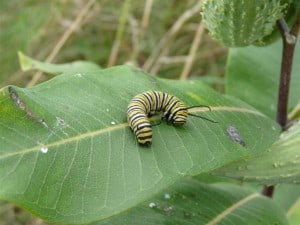The most significant “non-sightings” so far this spring and summer have been Monarch butterflies. I have only seen one so far this year and most people I know have not seen any. This includes, Don Davis , Ontario’s foremost Monarch bander and expert on the species. According to Don, a number of factors are in play: 1. The overwintering population in Mexico this past winter was the lowest ever recorded.The area of forest occupied by the butterflies, once as high at 50 acres, dwindled to 2.94 acres in the annual census conducted in December 2012, according to Mexico’s National Commission of Natural Protected Areas. That was a 59 percent decline from the 7.14 acres of butterflies measured in December 2011. Two reasons explaining the decline in the overwintering population are that Monarchs had arrived earlier than usual on their breeding grounds in the spring 2012. In some areas, they arrived before milkweed was up which meant that they weren’t able to reproduce. Drought in late summer and early fall of 2012 also created poor conditions for reproduction in many areas. 2. This year’s spring was late, wet, rainy and often cool in many areas which probably had a negative effect on reproduction. 3. There is on-going destruction of wintering habitat in Mexico, both through illegal lumbering and climate change. 4. There is a general loss of breeding habitat throughout the Monarch’s North American range from urban development and agriculture. 5. Thousands of acres of Round-up (a herbicide) resistant, genetically modified corn and soy beans have been planted in the American mid-west which is the most important reproductive region for Monarchs. This has killed any milkweeds that used to be able to grow here and survive in the corn and soy fields in the past. 6. Thousands of new acres of crops have been planted to be harvested for biofuels . This has meant the disappearance of milkweed plants that used to grow in those fields.
It should also be noted that the population of many other kinds of butterflies are also down this summer. However, these populations – also negatively effected by last summer’s drought – should be able to bounce back.
For more details on Monarch decline, check out this Blog and scroll down to Monarch Population Status, 29 May 2013, by Dr. Chip Taylor.
